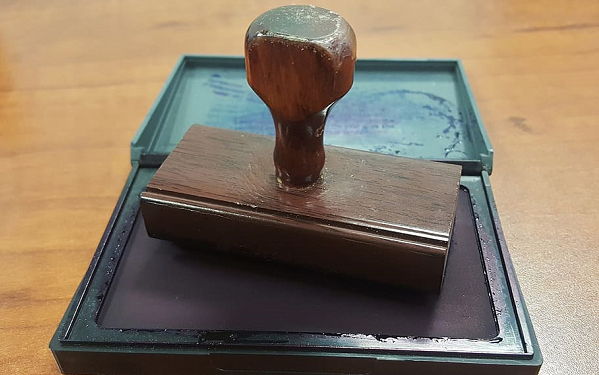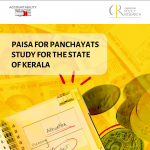
Panchayati Raj Day in India; a Time for Introspection
24 April 2020
Today, April 24, is celebrated in India as Panchayati Raj Day. It was on this day in 1993 that the 73rd and 74th Constitutional Amendments, which mandated rural and urban local governments, came into force. Twenty-seven years later, it is interesting to note how far we have come down the path of democratic decentralisation.
The objectives of these two elaborate amendments – they were decried by some at the time they were passed as writing in municipal-level law into the Constitution – were to constitute local governments in rural and urban areas. It was to endow them with functions, powers, responsibilities, funding windows and tax handles, as also transfer accountability to them to be responsible to both the people and agencies of oversight, for their effective functioning.
The question is whether those broad objectives have been achieved. If so why, and if not, why not?
What we see, once we peel away the self-congratulatory political rhetoric that is typically delivered on such celebratory occasions, is a patchwork of achievements and deep disappointments. Perhaps the only country-wide achievement that can be mentioned with some assurance, is that local governments are now constituted regularly through elections. Even in this respect, in spite of court pronouncements that have sternly mandated that these elections must be held within each five year term of the previous body so that the next body can take charge on the day that the previous one ends its term of office, states have found ingenious ways to postpone elections, sometimes for years at a time. Yet, the broad conclusion can be that in most states, elected panchayats and municipalities have emerged as permanent fixtures on the country’s political landscape. Some states may be exceptions in a few ways, but that only underscores the broad conclusion. It cannot take away from it.
However, do these elected bodies have substantive powers, not in a symbolic fashion, but in a real, operative sense? Here, if one has to compress one’s impressions into a single word, the answer is a bald, emphatic ‘No’. The gaps in devolution are again a patchwork of over ambitious laws contrasted by bad administrative practices and forsaken financial promises, depending upon the state concerned.
Yet, some broad shortcomings can be listed, which are prevalent across nearly all states. With respect to rural local governments, namely, the panchayats, these are some of the broadly universal trends.
First, the Constitution envisaged that the Panchayat system would comprise district, intermediate and village level elected bodies. The district panchayats are now clearly marginalised in the administrative scheme of things. Even in states that had strong district panchayats prior to the 73rd Amendment, such as Gujarat, Maharashtra and Karnataka, they have been shorn of their powers and at present. They are no more than empty shells that channelise non-discretionary expenditures such as salaries, to higher level staff that are nominally placed on deputation with these bodies, but who in actuality, answer to and are accountable to line departments. In other states, they never had a chance to function effectively in the first place; there was not even a pretense to empower them, with which to begin.
The marginalisation of the district panchayats represents a victory for one of the firmest and most consistent opponents of Panchayati Raj, namely, higher level bureaucrats, particularly the Indian Administrative Service. Close on their heels come higher level politicians such as MLAs. Both of
these class interests have correctly perceived district panchayats as directly threatening their authority. The IAS holds close to its heart the position of the District Collector, traditionally seen as the head of the district administration. The MLAs see district panchayat elected representatives as
their proximate political rivals, waiting in the wings to depose them and secure the party ticket for the next elections. It is in the interest of both to decry, disparage and get in the way of the smooth functioning of the district panchayats. The MLAs are blunt about why they do not want district panchayats to be endowed with real powers, responsibilities and budgets. What will we do then? They ask. They ignore the obvious answer to that question – they will then sit in the legislature and make laws – because they find it much more lucrative, both politically and financially, to poke
their noses in the micromanaging of local development and local expenditure decisions.
Bureaucrats are a little more subtle, but no less certain, in their reasons as to why district panchayats should not be empowered. They say that the latter are corrupt and that they lack capacities to plan and execute, often distributing the low volumes of money that they get equally between all members, to dissipate and misuse in works that overall contribute nothing to development. While there is more than a grain of truth in such dismissive observations, the same bureaucrats ignore exactly the same behaviour when exhibited by politicians at higher levels. That compromise is a ruthlessly cynical one, because bureaucrats know well enough that their careers are determined by their higher political masters, and not by those elected to the district panchayats.
The intermediate panchayats are perhaps the sorriest of the three levels of panchayats. They are completely sidelined by MLAs, whose constituency sizes often approximate the footprint of these. If the district panchayats are nothing more than ATMs that pass on salary funds to nominally deputed employees, the intermediate panchayats are even less endowed with funds. They are but a staging post for the Block Development Officers, again a time tested rural development administrative unit dating back to the 1950s. Elected representatives at the intermediate panchayat levels are therefore usually a disillusioned lot, who soon realise that they are bypassed in the political hierarchy and that the funding and programmatic design sees very little role for them.
The marginalisation of the district panchayats represents a victory for one of the firmest and most consistent opponents of Panchayati Raj, namely, higher level bureaucrats.
On the other hand, cutting across most states, the trend, particularly over the last decade, has been to focus on the village panchayats. Both bureaucrats and higher level politicians do not feel threatened by them. District Collectors, separated from Gram Panchayats by a reassuring distance, treat them with condescending benevolence, while keeping a watchful eye on them and swiftly leaping in to punish them, even as they ignore much greater corruption at higher levels. Our studies in Accountability Initiative have shown that union government grants today constitute about two-thirds of all grants that go to village panchayats, which makes the union directly interested in what the latter are doing, with all that money.
The union government–village panchayat link is further forged by advances in communication, and it is not unusual now for union government authorities to directly speak to village panchayat elected representatives, an arrangement in which District Collectors are willing and enthusiastic participants. In fairness to them, they have little choice in the matter – they are anxious to please the union government, keeping an eye on their career progression.
So, 27 years after the 73rd Amendment came into force, all we have is a framework of three levels of panchayats, comprising two marginalised levels, and a village level that is at best, a delegated agent, largely of the union government.
That is the bald truth.
Also Read: Will the Coronavirus health emergency revive democratic decentralisation?




